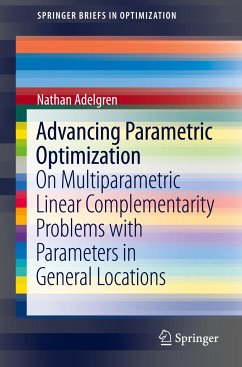The theory presented in this work merges many concepts from mathematical optimization and real algebraic geometry. When unknown or uncertain data in an optimization problem is replaced with parameters, one obtains a multi-parametric optimization problem whose optimal solution comes in the form of a function of the parameters.The theory and methodology presented in this work allows one to solve both Linear Programs and convex Quadratic Programs containing parameters in any location within the problem data as well as multi-objective optimization problems with any number of convex quadratic or linear objectives and linear constraints. Applications of these classes of problems are extremely widespread, ranging from business and economics to chemical and environmental engineering. Prior to this work, no solution procedure existed for these general classes of problems except for the recently proposed algorithms
Bitte wählen Sie Ihr Anliegen aus.
Rechnungen
Retourenschein anfordern
Bestellstatus
Storno









